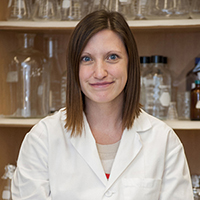Research to Reality: Researcher identifies effective chemical intervention for liver cancer


Every single day people are exposed to harmful environmental stressors that have the ability to damage or alter our body’s natural processes. In many developing countries and low resource populations, people are exposed to even more environmental hazards considering their lack of reliable access to proper nutrition and care.
Environmental and occupational factors play a major role in the health of populations. Due to chronic exposure to high levels of heat or radiation, natural and synthetic chemicals, as well as various food and nutrients we eat every day, these external stressors can cause major health problems including many forms of cancer.
Natalie Johnson, Ph.D., assistant professor with the Texas A&M Health Science Center School of Public Health, recently published findings from a new study using a chemical intervention approach to prevent carcinogen-induced liver cancer. This study examined the effectiveness of using a synthetic chemical intervention to prevent carcinogen-induced hepatocellular carcinoma (HCC).
“HCC, the most common form of primary liver cancer, is now the second leading cause of cancer mortality worldwide,” said Johnson.
“However, the use of chemical or dietary interventions to block, retard, or reverse carcinogenesis, an approach known as chemoprevention, represents a promising strategy for the reduction HCC.”
HCC is multifactorial, and the major causes include chronic infection with the hepatitis B or C (HBV and HCV) virus, cirrhosis, or exposure to aflatoxin B1 (AFB1). AFB1 is a naturally occurring toxin produced by the fungus Aspergillus flavus that often contaminates grains before they are harvested or if they are improperly stored. AFB1 is currently estimated to account for approximately a quarter of all human HCC cases worldwide. Furthermore, co-infection with the hepatitis virus greatly synergizes the risk of developing HCC.
“Most HCC cancers occur in parts of Southeast Asia and Africa due to chronic infection with HBV or HCV and ingestion of AFB1 through mold grains,” said Kenneth Olden, Ph.D., director of the U.S. Environmental Protection Agency’s National Center for Environmental Assessment, in a perspective published in relation to Johnson’s recent work.
In this study researchers examined the effectiveness of chemoprevention using a synthetic oleanane triterpenoid (CDDO-Im) to protect against AFB1-induced HCC. Using a lifetime cancer bioassay in a rat model, they measured and tracked DNA biomarkers in animals that were exposed to the AFB1 that either did or did not progress to develop HCC.
Findings showed that none of the animals that were treated with the CDDO-Im intervention developed HCC as opposed to the 22 out of 23 animals that were not treated with the intervention that presented with multiple HCC’s.
“The overwhelming positive impact of our chemical intervention on prevention of HCC and survival against a large exposure to AFB1 is unparalleled,” said Johnson.
“The complete risk reduction potential found in this model allows us to probe tenets of importance to the broader discipline of risk assessment.”
Using this complete risk reduction method, Johnson’s findings from this study provide a model for the future development of effective chemopreventive agents. This approach not only serves as the foundation for the development of new strategies of prevention in liver cancers, but could potentially expand our knowledge of carcinogenesis, enhance our ability to develop preventive therapies, and reduce overall cancer mortality around the world.
Media contact: media@tamu.edu


